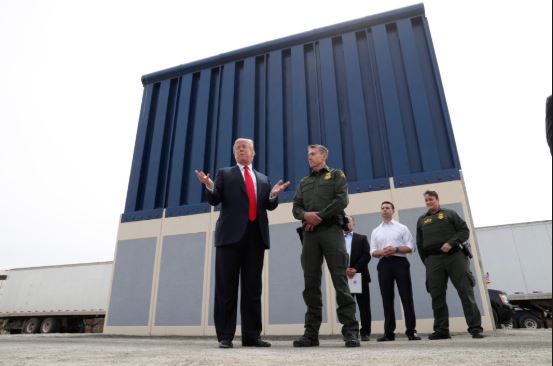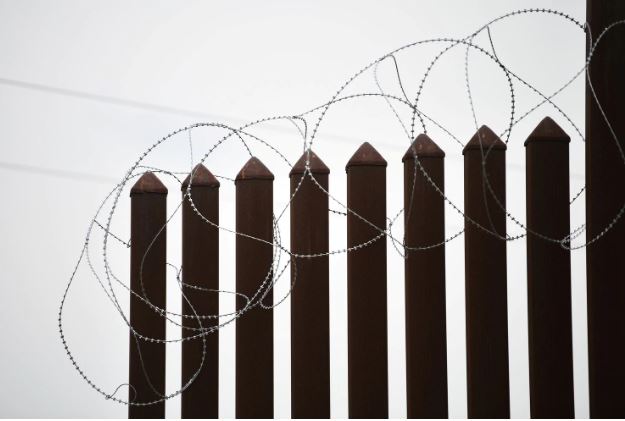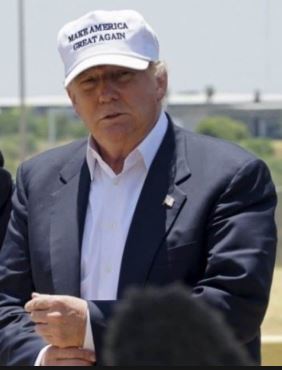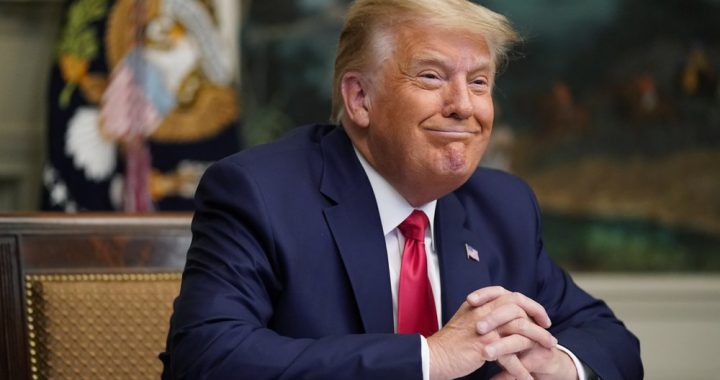
Trump wants his border barrier to be painted black with spikes
The barrier that President Trump wants to build along the Mexico border will be a steel bollard fence, not a concrete wall as he long promised, and the president is fine with that. He has a few other things he would like to change, though.
The bollards, or “slats,” as he prefers to call them, should be painted “flat black,” a dark hue that would absorb heat in the summer, making the metal too hot for climbers to scale, Trump has recently told White House aides, Homeland Security officials and military engineers.
And the tips of the bollards should be pointed, not round, the president insists, describing in graphic terms the potential injuries that border crossers might receive. Trump has said the wall’s current blueprints include too many gates — placed at periodic intervals to allow vehicles and people through — and he wants the openings to be smaller.
At a moment when the White House is diverting billions of dollars in military funds to fast-track construction, the president is micromanaging the project down to the smallest design details. But Trump’s frequently shifting instructions and suggestions have left engineers and aides confused, according to current and former administration officials.

Concertina wire is seen atop a section of border fence near the U.S.-Mexico border in Donna, Tex., on May 2. (Loren Elliott/Reuters)
Trump has demanded Department of Homeland Security officials come to the White House on short notice to discuss wall construction and on several occasions woke former secretary Kirstjen Nielsen to discuss the project in the early morning, officials said.
Trump also has repeatedly summoned the head of the U.S. Army Corps of Engineers, Lt. Gen. Todd T. Semonite, to impart his views on the barrier’s properties, demanding that the structure be physically imposing but also aesthetically pleasing.
“He thinks it’s ugly,” said one administration official familiar with Trump’s opinions, who, like others, spoke on the condition of anonymity to avoid being fired.
The president sees himself as “a builder,” said David Lapan, a former Homeland Security official who worked at the department when it spent more than $3 million on the construction of eight border barrier prototypesnear San Diego.

With the White House using an emergency declaration to get an additional $2.5 billion diverted from military budgets, Trump will face no such congressional scrutiny, potentially giving him more latitude to tailor the structure.
“But building high-rises in New York City is not the same as putting up a barrier at the border,” said Lapan, now at the Bipartisan Policy Center in Washington. “You’re not looking for aesthetics; you’re looking for functionality.”
Homeland Security officials had settled on the steel bollard design many years earlier, but Lapan said many of the prototypes were built using concrete to suit the president’s tastes — and demonstrated that the material was impractical and vulnerable to breaches.
Homeland Security officials declined to comment on the president’s design requests for the barriers and about his conversations with engineers and border officials. An Army Corps spokesman confirmed that Semonite has met several times with Trump and referred inquiries to the White House.
The president — who repeatedly promised to force Mexico to pay for his desired border wall — has pledged to build 400 miles of new barriers by next year, a goal he reiterated during an immigration speech at the White House on Thursday afternoon. The plan would probably require him to reprogram additional taxpayer funds from military budgets.







